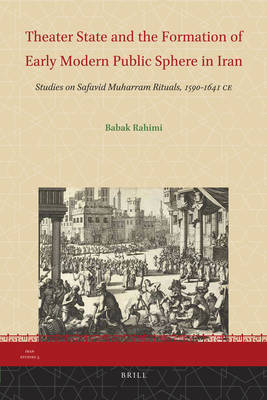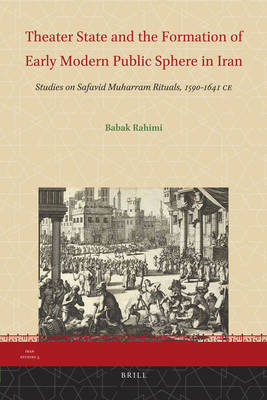
- Afhalen na 1 uur in een winkel met voorraad
- Gratis thuislevering in België vanaf € 30
- Ruim aanbod met 7 miljoen producten
- Afhalen na 1 uur in een winkel met voorraad
- Gratis thuislevering in België vanaf € 30
- Ruim aanbod met 7 miljoen producten
Zoeken
Theater State and the Formation of Early Modern Public Sphere in Iran
Studies on Safavid Muharram Rituals, 1590-1641 CE
Babak Rahimi
€ 290,45
+ 580 punten
Omschrijving
During the Safavid period, the Shi'i Muharram commemorative rites which had been publically practiced since the 7th century, became a manifestation of state power. Already during the reign of Shah 'Abbas I (1587-1629) the Muharram rituals had transformed into an extraordinary rich repertoire of ceremonies and ceremonial spaces that can be defined as 'theater state'. Under Shah Safi I (1629-1642) these ceremonies ultimately led to carnivalesque celebrations of misrule and transgression.
This first systematic study of a wide range of Persian and European archival and primary sources, analyzes how the Muharram rites changed from being an originally devotional practice to an ambiguous ritualization that in combination with other public arenas, such as the bazaar, coffeehouses or travel lodges, created distinct spaces of communication whereby the widening gap between state and society gave way to the formation of the early Iranian public sphere. Ultimately, the Muharram public spaces allowed for a shift in individual and collective identities, opening the way to multifaceted living fields of interaction, as well as being sites of contestation where innovative expressions of politics were made. In particular, the construction of the new Isfahan in 1590 is linked with the widespread proliferation of the Muharram mortuary rites by discussing rituals performed in major urban spaces.
This first systematic study of a wide range of Persian and European archival and primary sources, analyzes how the Muharram rites changed from being an originally devotional practice to an ambiguous ritualization that in combination with other public arenas, such as the bazaar, coffeehouses or travel lodges, created distinct spaces of communication whereby the widening gap between state and society gave way to the formation of the early Iranian public sphere. Ultimately, the Muharram public spaces allowed for a shift in individual and collective identities, opening the way to multifaceted living fields of interaction, as well as being sites of contestation where innovative expressions of politics were made. In particular, the construction of the new Isfahan in 1590 is linked with the widespread proliferation of the Muharram mortuary rites by discussing rituals performed in major urban spaces.
Specificaties
Betrokkenen
- Auteur(s):
- Uitgeverij:
Inhoud
- Aantal bladzijden:
- 404
- Taal:
- Engels
- Reeks:
- Reeksnummer:
- nr. 5
Eigenschappen
- Productcode (EAN):
- 9789004209794
- Verschijningsdatum:
- 11/11/2011
- Uitvoering:
- Hardcover
- Formaat:
- Genaaid
- Afmetingen:
- 165 mm x 246 mm
- Gewicht:
- 793 g

Alleen bij Standaard Boekhandel
+ 580 punten op je klantenkaart van Standaard Boekhandel
Beoordelingen
We publiceren alleen reviews die voldoen aan de voorwaarden voor reviews. Bekijk onze voorwaarden voor reviews.








